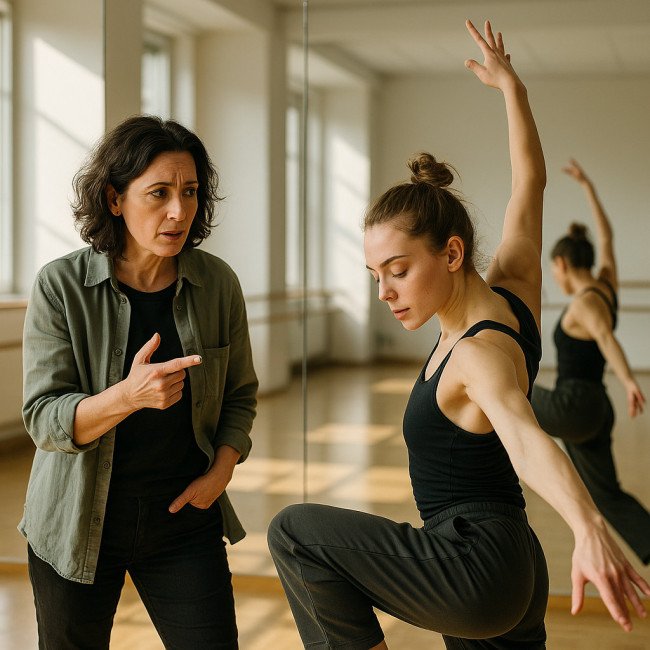External dance coach checklist: red flags, success metrics and commitment
Hiring an external dance coach can sky-rocket your technique and audition hit rate — or drain your budget with little return. Follow this actionable checklist to spot red flags, define success metrics and understand the commitment required before you sign any contract.
Why work with an external dance coach?

An external dance coach brings specialised knowledge, objective feedback and a fresh eye that studio teachers sometimes miss. Whether you need audition-ready reel assessments or injury-prevention tweaks, the right coach bridges the gap between daily class and professional stage demands. However, not every coach fits every dancer, so due diligence matters.
Pre-hire red flags you must not ignore
1. Vague or inflated promises
- Warning: Phrases like “I guarantee you'll book every job” signal unrealistic expectations.
- Fix: Ask for measurable milestones such as “Increase callback rate by 20 % within three months.”
2. No track record with your style
If you specialise in contemporary but the coach's portfolio screams ballroom, keep looking. Confirm at least three recent clients with verifiable credits in your niche.
3. Lack of injury-prevention credentials
A credible external dance coach holds basic conditioning or anatomy certificates. Cross-check licences with national bodies like One Dance UK.
4. Poor communication turnaround
Delayed emails hint at future rehearsal scheduling chaos. Test response time with a simple query before committing.
5. No written agreement
Handshake deals risk scope creep and fee disputes. You need a contract that covers session length, cancellation policy and deliverables, similar to those used when negotiating rehearsal pay.
Success metrics that prove coaching ROI
Measure outcomes, not just effort. Below are benchmarks top dancers track when they bring in an external dance coach.
| Metric | Baseline | Target after 12 weeks | Tracking tool |
|---|---|---|---|
| Callback rate | 2 / 10 auditions | 4 / 10 auditions | Audition log sheet |
| Technique score* | 72 / 100 | 80 / 100 | Coach assessment rubric |
| Injury downtime | 6 days / quarter | ≤3 days / quarter | Health journal |
| Choreography retention | 75 % after 48 h | 90 % after 48 h | Video-based self-test |
| Self-confidence rating* | 3.2 / 5 | 4.0 / 5 | Monthly survey |
*Scores derived from the dancer-fit engagement framework.
Visual snapshot: average gains with an external coach
Commitment checklist: are you truly ready?
- Budget: Allocate at least 10 % of your annual training spend to coaching.
- Time: Block two sessions per week plus solo drill hours.
- Mindset: Accept constructive critique without ego.
- Materials: Record every session on video for self-review.
- Health: Schedule physio check-ins alongside intense technique work.
Need structured drills to fill the days between coaching sessions? Explore the curated dance training resources hub updated weekly.
How to formalise the collaboration
Draft a crystal-clear contract
Outline scope, deliverables and IP rights. If the coach choreographs original phrases for your reel, ensure you have usage rights across platforms.
Agree on check-in cadence
Set bi-weekly KPI reviews. Use shared sheets so progress stays transparent.
Plan an exit clause
If metrics stall for two consecutive cycles, either adjust methods or part ways. This protects both parties.
FAQ
- How soon should I see results with an external dance coach?
- Minor corrections appear within the first month; substantial gains such as doubled callback rates typically emerge between 8 – 12 weeks.
- Is online coaching as effective as in-person sessions?
- For technique polishing and audition prep, high-definition video coaching can rival studio work, provided latency is minimal and feedback is immediate.
- What's a fair hourly rate for a professional external dance coach?
- Rates vary by geography and reputation, but €60 – €120 per hour is common in Europe for mid-career coaches with proven industry credits.
- Can I work with multiple coaches simultaneously?
- Yes, if each covers distinct goals (e.g., technique vs. performance psychology). Coordinate schedules to avoid overlapping corrections.
- Should the coach attend auditions with me?
- Optional. Some dancers pay a premium for on-site coaching during casting calls, but most benefits come from pre-audition training.
Quick self-test: are you coach-ready?
Takeaway
Choosing an external dance coach is less about star credentials and more about fit, metrics and mutual commitment. Follow this checklist, monitor the KPIs and review progress every quarter. Your dance trajectory will thank you.
Ready to level up? Start short-listing coaches today and integrate the success metrics template above into your first meeting.











